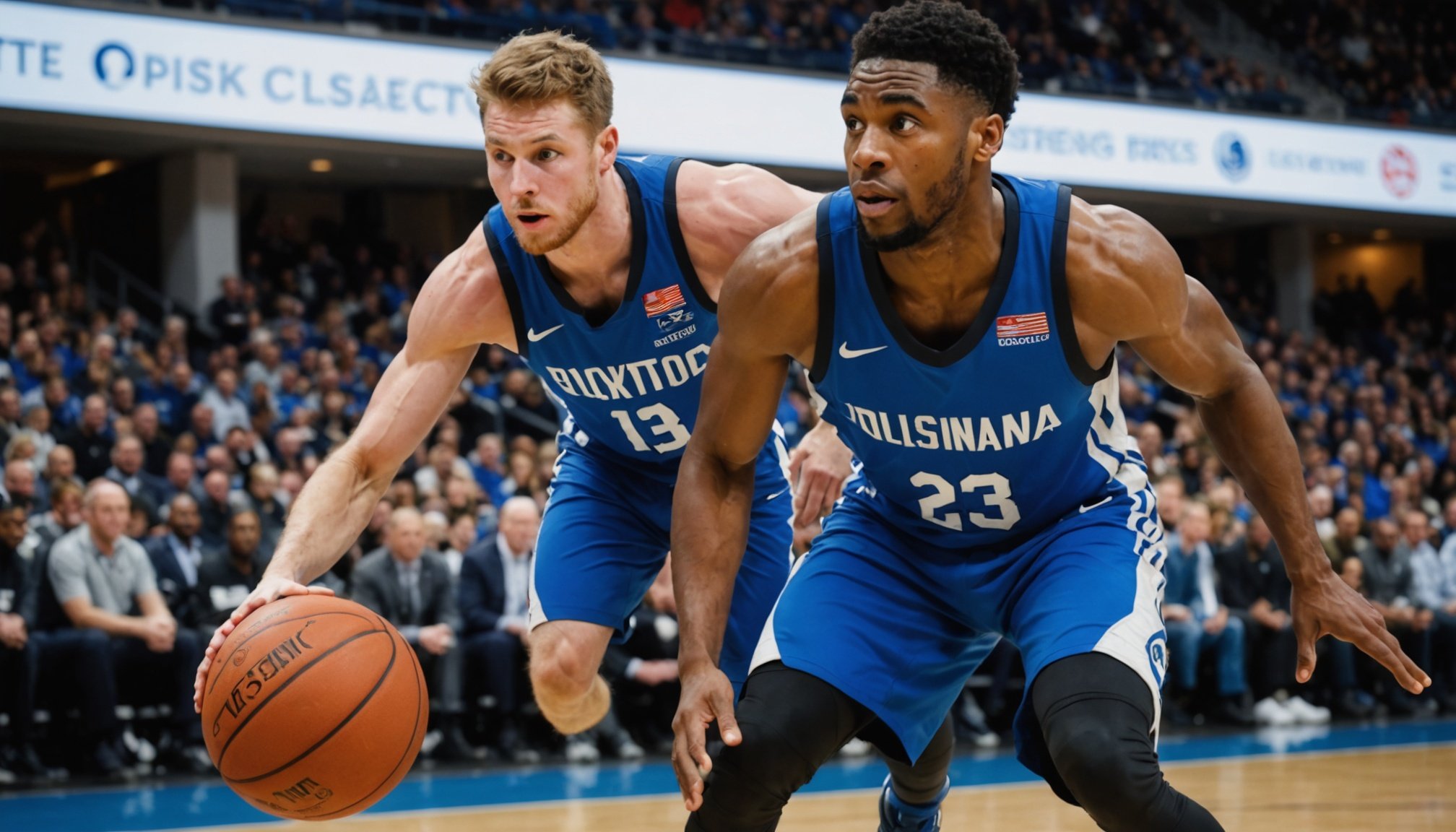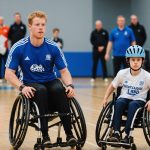Strength Training Workouts
Strength training plays a pivotal role in preserving muscle mass during the off-season, ensuring that basketball players maintain their competitive edge. Emphasizing key strength training exercises like squats, deadlifts, and bench presses is essential. These resistance exercises engage multiple muscle groups and foster overall strength enhancement.
A typical workout split for optimal muscle retention might include alternating upper and lower body sessions, ensuring a comprehensive approach to muscle development. Generally, incorporating a frequency of two to three days per week for each muscle group allows adequate recovery and growth. Remember, adequate rest is necessary for muscles to repair and strengthen.
Also to discover : Revamping talent scouting and recruitment tactics for emerging players in uk basketball academies
One of the cornerstones of effective strength training is the principle of progressive overload. This involves gradually increasing the weight, repetitions, or intensity of exercises to continuously challenge the muscles, leading to sustained strength gains. Without it, athletes risk hitting a plateau in performance.
Basketball players must integrate these strength training workouts with their sports-specific skills to optimize performance, ensuring they return to the court stronger, more resilient, and ready for action. Combining targeted workouts with a focus on progressive overload can effectively maintain and even enhance strength and muscle mass in the off-season.
This might interest you : Elevate your game: key shot-blocking skills every uk basketball center should master
Introduction to Off-Season Training Techniques
The off-season is vital for basketball players to focus on muscle mass preservation and overall conditioning. It presents an opportunity to address common challenges like maintaining strength while avoiding overtraining. Setting clear goals for muscle maintenance and strength gains helps in structuring an effective off-season regimen.
During this period, players should prioritize off-season training techniques that balance rest and exercise. This strategic approach aids in recovery, reduces the risk of injury, and prepares athletes for the competitive season. Recognizing the importance of gradual progression and specific goals is crucial for each player’s development.
Basketball athletes can benefit from setting specific targets to boost motivation and track progress. These may include aiming for improvements in vertical jump, enhancing endurance, or increasing overall agility. By establishing such benchmarks, players can tailor their training to meet their unique needs.
Moreover, incorporating a variety of exercises can help address different aspects of fitness and muscle mass preservation. With the right focus and commitment, basketball players can maximize their off-season to come back stronger and more skilled. An understanding of the necessity for a balanced and strategic approach is key.
Conditioning Exercises
Conditioning training is crucial for basketball athletes aiming to enhance aerobic fitness and maintain peak performance. Effective conditioning drills, such as shuttle runs and ladder drills, naturally complement strength training by boosting cardiovascular endurance and agility. This is particularly beneficial for basketball players who need to maintain their speed and explosiveness on the court.
Incorporating plyometrics into training routines enhances athletic explosiveness, critical for improving sprinting and jumping capabilities. Plyometric exercises, including box jumps and depth jumps, condition muscles to generate force quickly, enhancing overall performance. Interval training, on the other hand, focuses on alternating high-intensity exercises with rest periods, thereby improving stamina and endurance.
For optimal results, balancing strength and conditioning is imperative to avoid muscle loss, which could compromise performance. A strategic schedule interweaving conditioning sessions with strength workouts ensures comprehensive development without overloading the body. Including a variety of drills and exercises in a balanced routine can also help mitigate the risk of overtraining and injury.
Basketball players should strive to integrate diverse conditioning exercises with rest days to prepare effectively for the competitive season ahead. This approach optimises muscle mass preservation while boosting overall athletic prowess.
Nutrition Tips for Muscle Preservation
A basketball player’s diet plays a crucial role in preserving muscle mass throughout the off-season. Ensuring the intake of essential nutrients is vital for recovery and growth. Protein is particularly important, aiding in muscle repair and building. Sources like lean meats, beans, and dairy provide the required amino acids necessary for muscle sustenance.
The importance of macronutrient ratios cannot be overstated. Carbohydrates are crucial for replenishing energy stores after training sessions, while healthy fats support overall health and hormone production. Balancing these nutrients according to individual needs enhances training effectiveness and boosts recovery.
Hydration is likewise a pivotal aspect of athletic nutrition. Sustained water intake before and after workouts prevents dehydration, which can hinder performance and recovery. Incorporating muscle recovery supplements, such as branched-chain amino acids (BCAAs), could further support muscle maintenance. BCAAs help reduce exercise-induced muscle damage, allowing athletes to train with greater intensity and efficiency.
For basketball players seeking to optimize their off-season regimen, focusing on a nutrient-rich diet tailored to their specific needs is key. By adopting these nutrition strategies, athletes can maximise their training results and maintain muscle mass for their eventual return to competitive play.
Recovery Strategies
Effective recovery is essential for basketball players looking to maintain muscle recovery and prevent injuries during the off-season. Implementing various methods can significantly enhance a player’s ability to perform and sustain their training regimen. Prioritize rest days where complete rest or activities like light walking allow muscles to recuperate.
Incorporating active recovery activities such as swimming or yoga can aid in loosening tight muscles, promoting blood flow without causing strain. It’s crucial to include these in your off-season regimen to ensure continuous improvement without burnout.
Foam rolling and stretching are indispensable techniques in injury prevention and muscle maintenance. Foam rolling decreases muscle tension, while stretching enhances flexibility. Such practices should be routine to mitigate injury risks, especially in a sport that requires agility and endurance.
For optimal recovery, schedule these techniques both pre and post-training to consistently support muscle regeneration. Addressing these recovery zones ensures that athletes return to the court in peak condition, with reduced risk of setbacks. By focusing on these strategies, players can build resilience and sustain their muscle fitness throughout the off-season.
Scheduling the Off-Season Training
Planning a well-balanced training schedule is crucial for basketball players during the off-season to maximise performance and muscle retention. A comprehensive basketball training plan should focus on all key areas: strength, conditioning, and recovery. This not only aids in muscle mass maintenance but also enhances overall conditioning.
Creating a balanced training schedule involves including various activities throughout the week. Consider scheduling strength training on Monday and Thursday, conditioning exercises such as interval training and plyometrics on Tuesday and Friday, and recovery-focused sessions like stretching or foam rolling on Wednesdays. On weekends, light activities, such as swimming or yoga, can help in reducing muscle tension without stressing the body.
Monitoring progress is essential. Regular assessments enable adjustments to the training regimen based on performance and recovery needs. Utilize tools like training logs or fitness apps to track improvements in strength, endurance, and agility.
Example weekly plans might include:
- Monday & Thursday: Strength training
- Tuesday & Friday: Conditioning and agility drills
- Wednesday: Recovery-focused activities
- Weekend: Active recovery
By crafting a well-rounded and flexible schedule, athletes can optimise their off-season regimen, ensuring preparedness for the competitive season.
Expert Advice and Resources
Consulting expert tips can significantly elevate your off-season training efforts. Renowned professionals often emphasize the balance between strength and conditioning training to enhance athletic performance. Experts advise focusing on functional movements that mimic on-court actions to ensure skills translate effectively during matches.
Sports science research offers valuable insights into optimized training methods. Studies consistently show the benefits of incorporating aerobic fitness into regimens, highlighting how improved endurance directly impacts game performance. Use these findings to adjust your strategy, ensuring it is evidence-based and effective.
Numerous training resources are available for those eager to refine their approach. From instructional videos to comprehensive guides, these tools can provide structured support. Books and articles by leading trainers and sports scientists can deepen your understanding and keep you in tune with the latest trends and innovations.
Engaging with updated research allows players and coaches to access the most relevant tactics, ensuring training remains cutting-edge. Regularly consulting academic journals, attending workshops, or engaging in online courses can help integrate new techniques into your basketball training plan. Stay informed to maintain a competitive edge and maximise off-season development.











